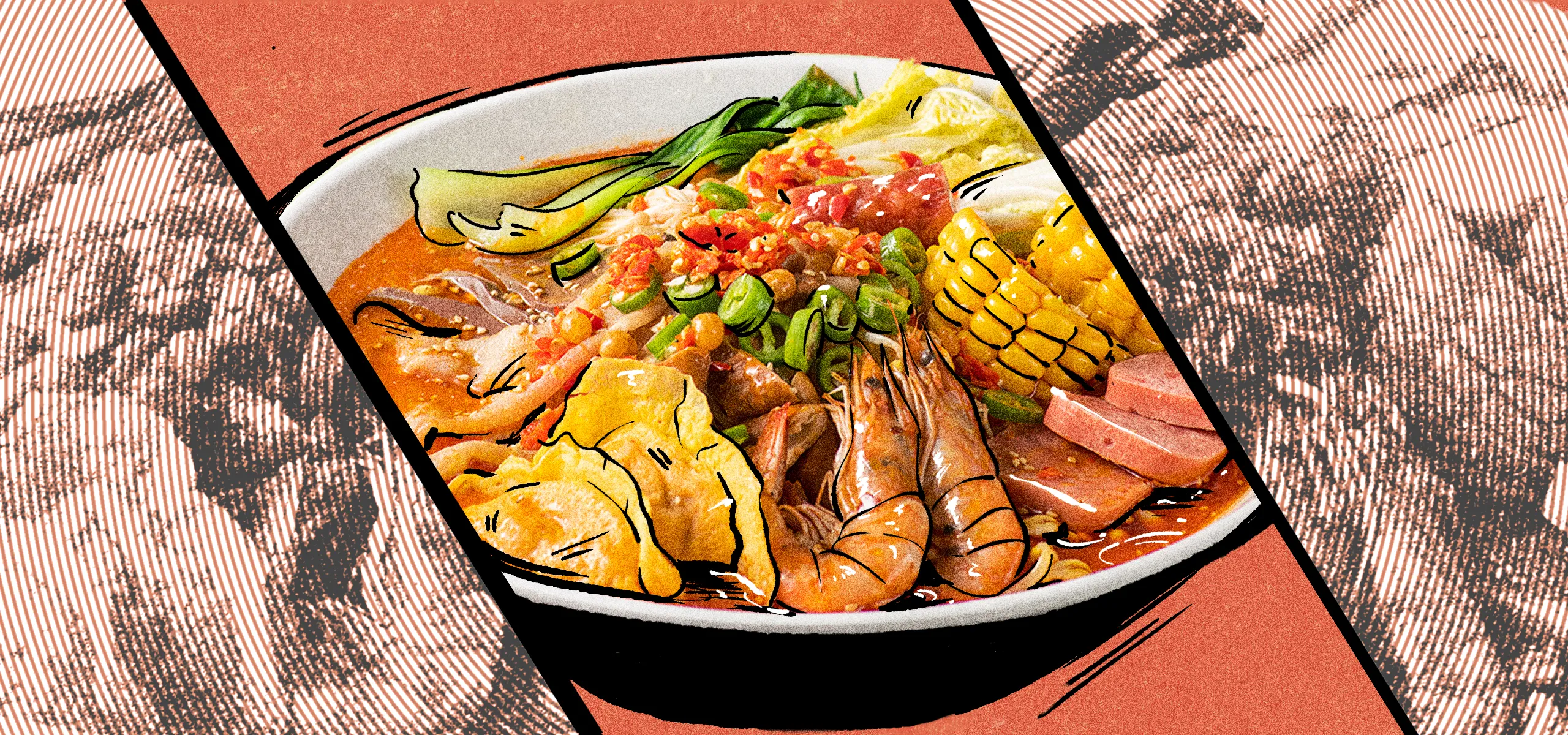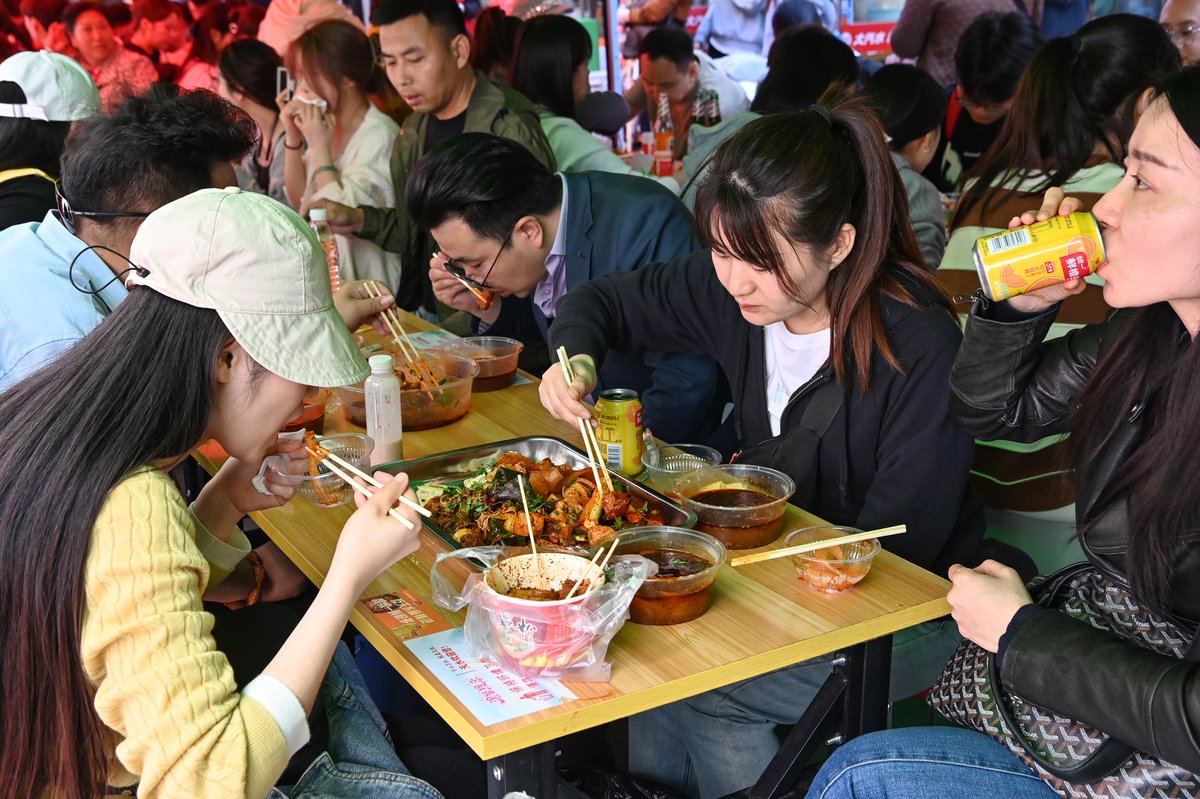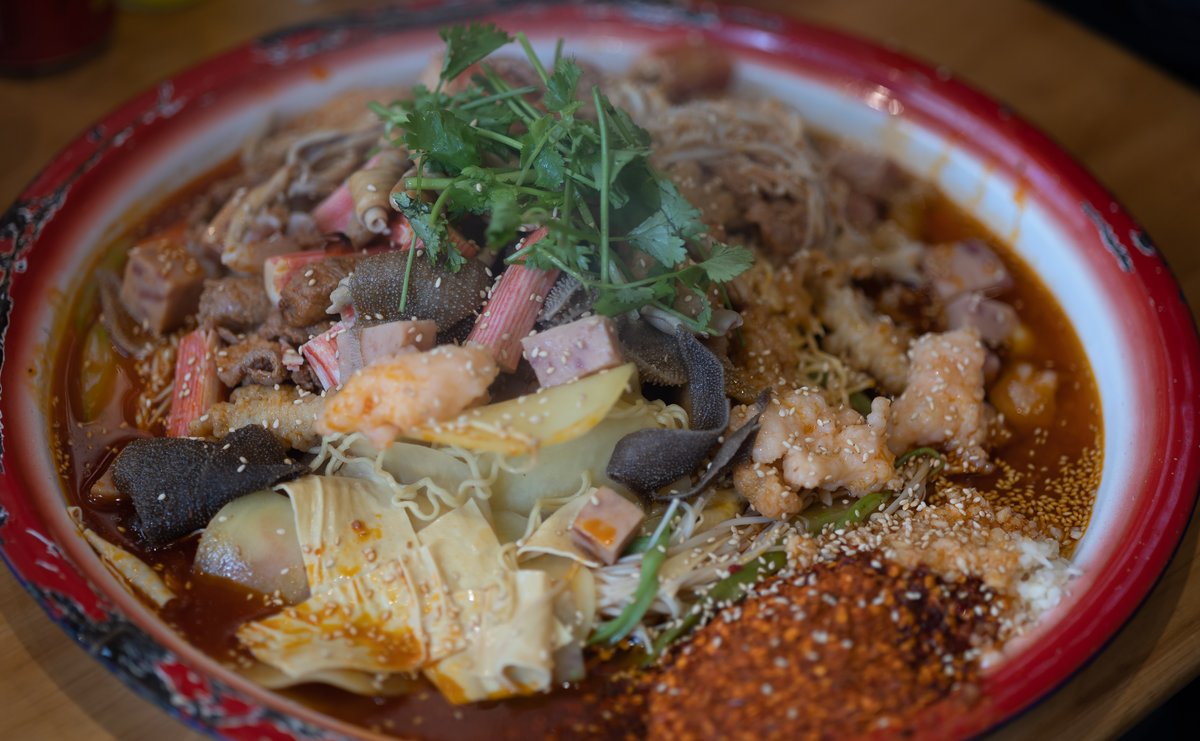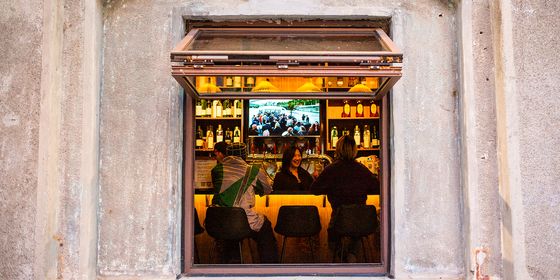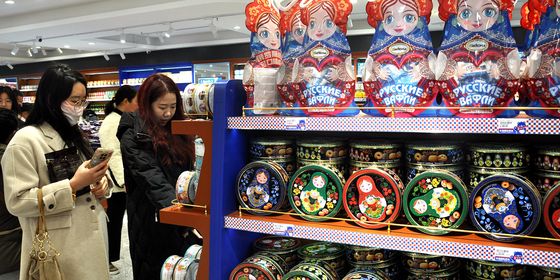As a Gansu variety of “malatang” goes viral online, we delve into the history and appeal of one of China’s most ubiquitous dishes
Mao Zhenhua, a college student from Changsha in central China’s Hunan province, has picked Tianshui, over 1,300 kilometers away, as her next travel destination. The absence of direct flights means it will take at least 6.5 hours to get to the small city in Gansu province via high-speed train. Once Mao arrives, she expects to do hours more queuing to get to the city’s main attraction: a bowl of Tianshui malatang.
Malatang (麻辣烫) is one of China’s most ubiquitous dishes, found on streets across the country. The ingredients can consist of almost anything the diner chooses, from various meats, vegetables, and noodle varieties. These are all boiled in broth and then served with soup and a choice of sauces. It’s a humble, quick, and (usually) cheap eat available at street carts or in restaurants. Tianshui’s version features local chili oil sauce and ingredients like fried potato balls and handmade noodles.
Since Tianshui’s previously unknown malatang went viral in mid-February, hordes of people from around the country have visited, including nearly 1 million in the three-day Qingming Festival holiday in April, according to Gansu’s Department of Culture and Tourism. Some visitors began lining up outside Haiying Malatang Restaurant, the most popular one in the city, as early as 2:30 a.m. (eight hours earlier than its opening) to get a taste, while latecomers faced queuing up for hours in vain till it closed at 8 p.m., Shanghai-based news outlet The Paper reported in April.
Many people are confused by the sudden virality of Tianshui’s seemingly unremarkable malatang. On Q&A platform Zhihu, thousands of users have speculated the answer under a thread titled “How has Tianshui malatang gone viral?” with many suggesting the local government played some role. Many places across the country have their own twists and variations to add to malatang; why this one has proved exceptionally popular is a mystery. Tianshui is, however, clear evidence of how much Chinese people love the simple dish.
Mao, for instance, has had malatang almost every day for the past four years. “The abundant selection of food, including vegetables and meat, can satisfy people’s different needs,” she says, explaining the attraction of the dish’s versatility where everything that goes in is chosen by the diner. Statistics from Ele.me, a food-delivery app, showed that in the first half of 2019, malatang was the best seller in the daytime (from 5 a.m. to 8 p.m.) on the platform in seven of China’s 10 biggest cities. In Ningxia region and Heilongjiang province, malatang accounted for nearly 10 percent of all food delivery orders on the platform.
Even complaints over rising prices and hygiene scandals around malatang restaurants in recent years haven’t stopped China’s malatang economy growing from 96.8 billion yuan in 2016 to over 140 billion yuan in 2022, according to a report by Canyin88.com, a Guangzhou-based industry media platform.
Comfort food
There are no conclusive records of malatang’s origin, but it is commonly believed to have come from Leshan, Sichuan province, decades ago: Barge haulers working on the Minjiang River are supposed to have cooked food over an open fire on the riverbank, throwing whatever food they had and boiling them with Sichuan peppercorns and chili pepper—this gave rise to its name, 麻辣烫 (málàtàng), literally “numbing, spicy, boil.” The food was also thought to help dispel cold and dampness from the body, common ailments in traditional Chinese medicine theory. Later, local vendors peddled the snack with food often laid out on bamboo skewers for diners to pick out. A common folk saying describes the scene after the first malatang stalls began to emerge on the streets of Leshan in the 1980s: “In the ’80s, [people] stood on the street, boiled the skewers under the street lamp, with several ingredients in a pot, and then shared a plate of chili pepper dip.”
As the dish spread, different regional varieties emerged. Sun Fengyi, a 42-year-old from Houma, Shanxi province, remembers eating malatang similar to the now viral Tianshui style on the streets of his hometown nearly 30 years ago. “One skewer cost 5 mao to 1 kuai. We could also add local pancake and fried dough sticks in the malatang. We could stuff ourselves for just several kuai,” he recalls, adding that he would crave the flavor every two or three days.
Mao’s favorite variety is from Hunan’s Yiyang city, which has food skewered on sticks and cooked in a spicy broth ready for consumers to pick and eat with self-served condiments. Its spiciness is “to the taste of Hunan locals,” she says. From time to time, though, Mao will eat a blander, less spicy variety from malatang chain restaurants.
Malatang became truly popular nationwide over the last decade or so with the emergence of restaurant brands like Yangguofu and Zhang Liang, which have adapted the recipe for spice-averse consumers by using plain animal bone or tomato soups for broth and adding sesame paste—a popular sauce in north China—for a richer and milder taste. Yangguofu (which began its franchise store in 2007) and Zhang Liang (founded in 2008), China’s top two malatang companies both born in Harbin, Heilongjiang province, have around a combined 12,000 stores, including over 100 outside China.
Sun, who has run a malatang shop in Beijing for over 10 years, believes the dish’s popularity stems from the variety of ingredients and flavors that can “cater to common people’s taste.” Just as a popular saying puts it: “Malatang is hot pot for one person, while hot pot is malatang for a group.”
Spice wars
However, this previously economical comfort food’s surging price has upset many consumers. In 2023, the price of malatang became a topic of heated debate on social media platforms multiple times. The hashtags “Why is malatang more and more expensive” and “I ate a malatang for 35 yuan” received over 100 million and 270 million views each on the microblogging platform Weibo.
In the past, most malatang joints charged by the number of skewers of food the consumer bought or offered set meals at non-variable prices, but now the majority of malatang restaurants charge based on the weight of the food consumers choose, following a trend started by Yangguofu.
Mao’s normal meal at her regular Yiyang malatang restaurant costs her around 30 yuan, with each skewer between 1 and 5 yuan. At Yangguofu or other restaurants that charge by weight, she pays much more. One malatang meal at her university canteen even cost her 50 yuan.
Liu He, a 23-year-old Beijing local and fan of Yangguofu and Zhang Liang, limits herself to just two “heavy ingredients” per meal. Steamed gluten and fish-flavored tofu are some of the worst scale-tipping culprits she says. “The bill often surprises me if I’m not cautious enough [when picking the ingredients],” she tells TWOC. She has also experienced 50-yuan meals. Two decades ago, paying under 10 yuan for a malatang meal was common.
The two big malatang chains have drawn more consumer ire for several food safety scandals. Diners have found hair, worms, and unspecified highly processed meat in Yangguofu malatang. From February 2022 to January 2023, the Beijing Consumer Association, a government-affiliated consumer watchdog, reported 15 Zhang Liang stores for food safety issues such as storing food improperly and failing to sterilize their appliances and equipment to standard.
At the same time, new brands have tried to change malatang’s reputation from a throwback comfort food to a more sophisticated, even healthy, meal for increasingly health-conscious young urbanites. On Yangguofu’s website, for example, the chain claims to have “redefined malatang” with its “nutritious” ox bone soup made with over 20 herbal ingredients and milk.
Sun thinks that since malatang is just boiled food materials, with little oil, “It’s nutritionally balanced and healthy if you don’t add the wrong things. For instance, the broth must be made with real bone soup and spices instead of simply mixing various artificial flavorings or choosing food products with many additives,” he says. While most “fast food” is devoid of fresh vegetables, malatang restaurants generally have a variety for diners to select.
Liu praises the dish’s nutrition and refers to its benefits in traditional Chinese health principles: “I eat malatang more often during the winter, to keep myself warm with the spicy and hot food. In summer, I choose it to up my vegetable intake.” She even finds it psychologically comforting, “especially when I get nervous or feel under pressure, I desire a bowl of spicy and hot malatang even more, since it makes me sweat and feel more relaxed,” she says.
Liu is, however, somewhat picky about her malatang varieties. In March, she tried the Tianshui style. But instead of taking the long trip to Gansu, she got her fix at a new restaurant in Beijing that opened to jump on the viral craze. “It was all red and smelled aromatic with the chili oil sauce, but it didn’t taste as spicy or as good as I hoped,” she says. She prefers the richer and milder variety. “I’m from Beijing, so sesame sauce runs in my blood.”





